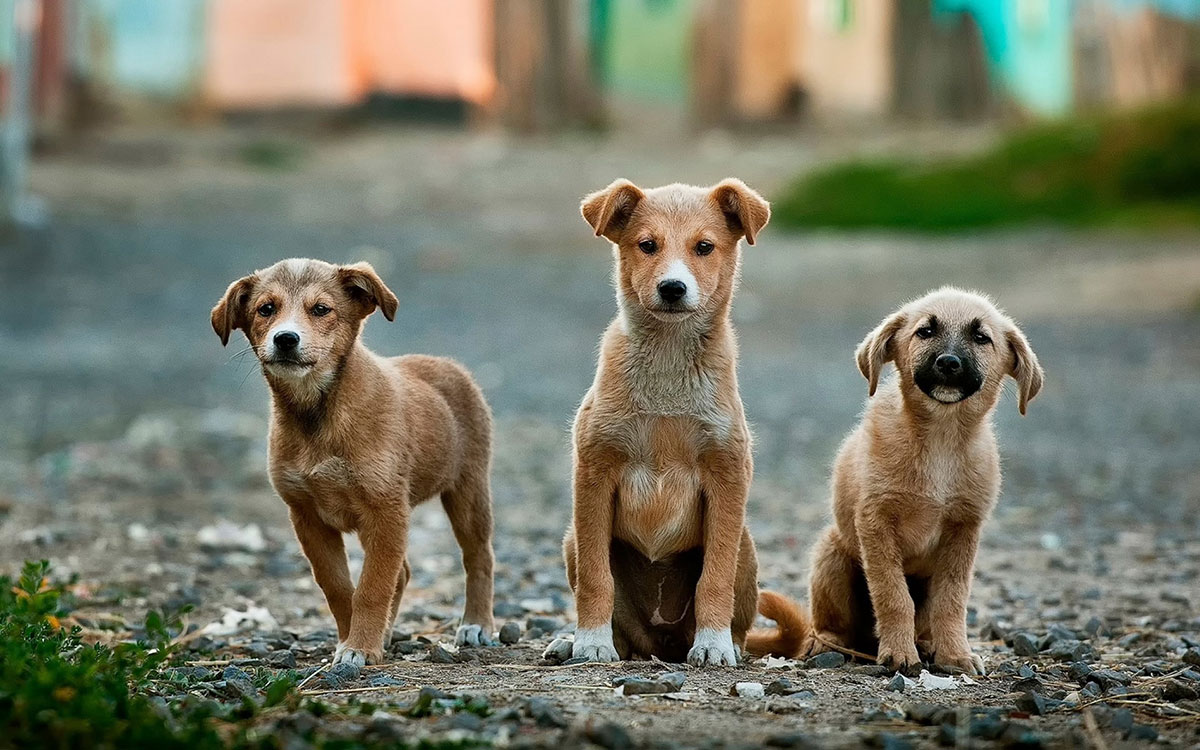Picture this: a sprawling Texas landscape where the horizon stretches endlessly, dotted with cattle and mesquite trees. In the foreground, a weathered cowboy sits atop his horse, but it’s not just him and his trusty steed working the herd. Below, a loyal Blue Lacy darts through the brush, expertly maneuvering stubborn cattle with precision and determination. This scene captures something deeply embedded in Texas culture: the unbreakable bond between ranchers and their working dogs.
While apartment dwellers in bustling cities like Dallas and Austin might gravitate toward compact Yorkshire Terriers or gentle French Bulldogs, most Texans share a different perspective entirely. Throughout the Lone Star State, loyalty isn’t just a virtue, it’s a necessity. When your livelihood depends on managing thousands of acres and hundreds of cattle, you need a four-legged partner who understands the meaning of true dedication.
The Blue Lacy: Texas Born and Bred

The Blue Lacy, a true Texas native, was designated as the official dog breed of Texas through a resolution passed by the Texas legislature in 2005. This isn’t just political fanfare. The Lacy dog was named after the Lacy brothers (Ewin, Frank, Harry, and George), ranchers from Kentucky that moved to Burnet County, Texas in 1858 and brought their ranching dogs with them.
Unlike apartment breeds that were developed for companionship, the Blue Lacy is a medium-sized working dog breed that originated in Texas during the mid-19th century. Developed by the Lacy brothers (Frank, George, Ewin, and Harry) in Burnet County, Texas, in 1858, this versatile breed was created to assist with various ranch tasks, including herding and hunting. These dogs weren’t bred to sit prettily on velvet cushions. They were forged by necessity and shaped by the demanding Texas landscape.
The Lacy is a working breed, and does much better when given a job, which allows them to burn off excessive energy. Work they excel at includes herding livestock, blood trailing or tracking, treeing game, running trap lines, and hunting wild hogs.
Loyalty That Goes Beyond Obedience

Ranch dogs possess a different kind of loyalty than their city counterparts. It’s not the playful devotion of a Cavalier King Charles Spaniel eager for afternoon cuddles. Instead, it’s the fierce commitment of a partner who understands that lives, literally, depend on their performance.
It’s hard to put into words how much the working cow dog means to its rancher. These dogs are a part of their ranching families, working long hours every day to put food on the family table. They love their jobs, and nothing could stop them from being at their rancher’s side. Loyal and trustworthy, they share a passion for working cattle that only the rancher could understand.
This loyalty manifests in ways apartment dog owners might never witness. A Border Collie won’t abandon a scattered herd during a thunderstorm. An Australian Cattle Dog will position itself between cattle and danger without being told. These dogs are very loyal and just as willing to take a drive in the truck as they are to herd cows.
Bred for Purpose, Not Pampering

While apartment dogs like Pugs and French Bulldogs were selectively bred for companionship and aesthetics, ranch dogs were developed for function. Life on the farm requires the tenacity, speed and loyalty of a working dog. Even with new technologies and aids, nothing quite compares to the perseverance and aptitude of farm and ranch dogs.
Consider the Australian Shepherd, one of Texas’s most beloved breeds. With their history of herding and ranching, it shouldn’t be a shock that the Australian Shepherd is well-loved in Texas! This dog breed is one of the smartest around, so they do great in all kinds of jobs, particularly agility and herding. These dogs aren’t concerned with how comfortable the couch is. They’re focused on reading cattle movement, anticipating problems, and solving them independently.
Herding breeds are typically high-energy, or high drive, dogs with excellent stamina, able to run and work for hours without tiring. Their endurance is part of what makes them such efficient workers. This stamina isn’t just physical. It’s mental toughness developed over generations of selective breeding for performance over appearance.
Intelligence That Solves Real Problems

Smart apartment dogs might learn impressive tricks to entertain dinner guests. Ranch dogs use their intelligence to make split-second decisions that can mean the difference between profit and loss for their families. Duane and Dottie Packard, president and interim secretary of the National Cattledog Association, tell Daily Paws that cattle dogs can follow directions, yet work independently when needed. “The good ones learn to understand the job you’re doing and help get it done, more than just doing what they’re told,” they explain.
This problem-solving ability sets ranch dogs apart from their apartment counterparts. A Yorkshire Terrier might figure out how to open a treat jar. A working Australian Cattle Dog reads the body language of a bull, calculates escape routes, and positions itself strategically to prevent disaster. Australian Cattle Dogs, better known as “heelers” are a staple for livestock owners and handlers. They have powerful herding instincts and are known for their ability to quickly nip the heels of livestock.
Weather the Storm Mentality

Texas weather doesn’t ask permission. Scorching summers, unexpected thunderstorms, and bitter cold fronts test both human and canine resilience. Ranch dogs develop what Texans call “weather the storm” mentality, a psychological toughness that apartment breeds rarely need to cultivate.
Lacys are generally healthy dogs. Developed for generations to meet the requirements of ranchers and hunters, they are sturdy enough to withstand tough terrain, difficult working conditions, and both hot and cold we This resilience isn’t just about physical hardiness. It’s about mental fortitude developed through generations of selection for dogs who won’t quit when conditions get tough.
Apartment dogs typically experience climate-controlled environments and predictable routines. Their biggest weather challenge might be deciding whether to use a raincoat during a brief walk. Ranch dogs work through everything nature throws at them, developing a psychological toughness that translates into unwavering reliability.
The Economics of Loyalty

Texans are practical people, and ranch dogs represent an investment that pays dividends daily. While apartment dogs might cost thousands in veterinary bills for conditions like breathing problems or joint issues common in over-bred toy breeds, working dogs tend to be remarkably healthy and long-lived when properly cared for.
The life of a working cow dog can be adventurous and demanding. They receive a high protein, high energy dog food to support their health and recovery during their long days on the ranch, and many ranchers supplement with a comprehensive wellness supplement like Platinum Performance® Canine to ensure they’re getting everything they need. This isn’t pampering; it’s practical investment in a working partner.
The economic value of a well-trained ranch dog is immeasurable. I’ve got two guys working for me, and they stay busy saddling and warming up horses,” he says. “I don’t have to waste a guy by having him turn back for me. I just use those two dogs, and we roll through [the horses in training] a lot faster. One dog can accomplish the work of multiple human hands, and they do it with enthusiasm and precision that money can’t buy.
Cultural Connection and Heritage

For many Texans, choosing isn’t just practical, it’s cultural preservation. The Blue Lacy has been a part of Texas history for over 150 years, and its role as a working dog on ranches and farms has made it a beloved and integral part of the state’s culture. The designation was a result of their efforts to raise awareness of the breed’s importance to Texas and to preserve its place in the state’s history and heritage.
This connection runs deeper than simple preference. It’s about maintaining traditions that built Texas and honoring the partnership between humans and dogs that made ranching possible. The family’s connection to Texas history runs deep, with their dogs becoming integral to the state’s ranching heritage over more than a century and a half.
When a Texan chooses a Border Collie or Australian Shepherd, they’re not just getting a pet. They’re connecting with generations of ranchers who depended on these breeds for their livelihoods. This cultural significance creates bonds that apartment dogs, despite their charm, simply can’t match.
Ranch dogs embody everything Texans value: independence, loyalty, intelligence, and an unshakeable work ethic. While apartment breeds certainly have their place and bring joy to countless families, there’s something uniquely Texan about dogs who view work as play and loyalty as non-negotiable. These aren’t just pets; they’re partners in the truest sense of the word. Next time you see a working dog in action, remember you’re witnessing a partnership forged by necessity, refined by generations, and strengthened by mutual respect. What do you think about the difference between working dogs and companion breeds? Tell us in the comments.

Andrew Alpin from India is the Brand Manager of Doggo digest. Andrew is an experienced content specialist and social media manager with a passion for writing. His forte includes health and wellness, Travel, Animals, and Nature. A nature nomad, Andrew is obsessed with mountains and loves high-altitude trekking. He has been on several Himalayan treks in India including the Everest Base Camp in Nepal.






